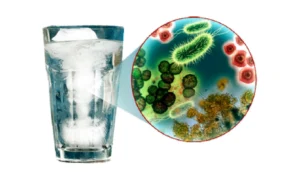Drinking Water Testing
Clean, safe drinking water is a fundamental necessity for human health. Drinking water testing typically conforms to ISO standards before it reaches our homes. We often take for granted the purity of the water that flows from our taps, but the reality is that water sources can become contaminated with bacteria, posing a significant threat to public health. In this blog post, we will explore the common bacteria found in drinking water, the detection methods using agar plates from Thermo Scientific™ Oxoid™, and why Thermo Scientific™ Oxoid™ is a reliable choice for this critical task.
Common Bacteria in Drinking Water
Before we delve into the drinking water testing methods, it’s essential to understand the types of bacteria commonly found in drinking water. While many types of bacteria can be present, some are particularly concerning due to their potential health risks:
- Escherichia coli (E. coli): E. coli is a well-known indicator of fecal contamination. Its presence in drinking water indicates a high likelihood of other harmful pathogens being present as well.
- Coliform Bacteria: Coliform bacteria, serving as indicators of water quality, suggest possible water contamination with faecal matter or other pathogens.
- Enterococci: These bacteria serve as water quality indicators, especially in recreational waters, signalling potential faecal contamination.
- Legionella: Thriving in warm water environments such as plumbing systems, Legionella bacteria can lead to severe pneumonia known as Legionnaires’ disease.
- Pseudomonas aeruginosa: This bacterium can cause infections in individuals with weakened immune systems and is often associated with healthcare facilities.
Agar Plates from Thermo Scientific™ Oxoid™ and Detection Steps According to ISO
Transitioning to the detection methods, Thermo Scientific™ Oxoid™ offers a range of agar plates designed to detect and enumerate bacteria in various environments, including drinking water. These plates are invaluable for monitoring water quality and ensuring its safety for consumption.
The detection and enumeration of bacteria using Thermo Scientific™ Oxoid™ agar plates generally follow ISO guidelines:
Sample Collection
Technicians first collect water samples from relevant points, ensuring the samples accurately represent the water source.
Inoculation
They aseptically transfer a known volume of the water sample onto the suitable Thermo Scientific Oxoid agar plate, promoting the growth of target bacteria.
Incubation
After inoculation, the plates undergo incubation at the appropriate temperature for a specific duration. This facilitates bacterial growth, making colonies visible on the agar surface.
Colony Counting
Technicians then actively count the visible bacterial colonies, directly correlating the colony count with bacterial concentration in the water sample.
Confirmation
To actively confirm the identity of specific bacterial species, technicians may perform additional tests or biochemical assays (such as RapID™ System), essential for identifying potential pathogens.
You can refer for more details about E.coli Detection and Salmonella Detection here.
Why Choose Thermo Scientific™ Oxoid™ for Drinking Water Testing?
So, why opt for Thermo Scientific™ Oxoid™? Several compelling reasons make it the preferred choice for detecting bacteria in drinking water.
Quality and Consistency
Thermo Scientific Oxoid products consistently demonstrate high quality. This ensures dependable and reproducible results, which are vital for water quality monitoring.
Broad Range of Agar Plates
Thermo Scientific™ Oxoid™ offers a wide variety of agar plates, enabling the detection and enumeration of diverse bacteria, including those commonly encountered in drinking water.
Compliance with Standards
Thermo Scientific Oxoid agar plates align with international standards such as ISO. This makes them suitable for regulatory compliance, actively contributing to the safety of drinking water.
Research and Innovation
Thermo Scientific™ Oxoid™ is committed to research and innovation, continuously improving its products to meet the evolving requirements of microbiological testing.
Conclusion of Drinking Water Testing According to ISO
In conclusion, actively detecting bacteria in drinking water is a critical aspect of ensuring the safety and quality of this essential resource. Thermo Scientific Oxoid’s agar plates, coupled with ISO-standard detection methods, provide a dependable means of monitoring water quality and safeguarding public health. By selecting Thermo Scientific™ Oxoid™ for your water testing needs, you make a wise and responsible choice that actively contributes to the well-being of communities worldwide.


